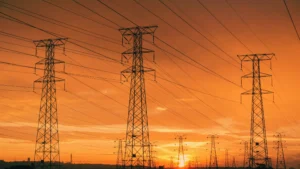A new lens for approaching wildfire forecasting and planning
Electric utilities are acutely aware of wildfire risk. Across the regions that are most impacted by fire, they’re proactively implementing different prevention, detection, and mitigation strategies to ensure they’re collectively working to improve public safety, and power reliability.
Traditionally their approach has been to rely on historical data analysis and location-based risk assessments to forecast and plan for wildfire risk, but in the age of digital transformation there has been an influx in investments in all types of grid technologies.
The technological possibilities are now endless: from weather monitoring technology, microgrid installations, intelligent line sensors, to drones, LiDAR and satellite imagery. Electric utilities are implementing technology and capturing data at a speed like we’ve never seen before, and it’s showing no signs of slowing down.
But there is no silver bullet when it comes to reducing risk and building resilience. Utilities need to try out different approaches, and to see the problem like a puzzle that needs to be assessed from a number of different angles, with many pieces needed for a successful outcome.
One tried and true approach for utilities to take is to combine these new technologies with good old standard asset management best practices when crafting their optimal wildfire mitigation plan. When it comes to mitigating and preventing wildfires, taking an asset-centric approach is undoubtedly a critical contributor to helping utilities to better manage their risk.
Blog: Wildfire risk mitigation – An asset perspective
An asset-centric approach to wildfire mitigation
When utilities are looking to reduce their wildfire risk, they have to take a look at the components of their overall risk and their in-service assets are a really important part of this. An asset-centric approach focuses on identifying the wildfire risks associated with each asset, such as power lines, transformers, poles, etc., and prioritizing preventive measures accordingly.
Below are some ways that electric utilities can take an asset-centric approach to fire risk management.
Asset data
Utilities can create an inventory of their assets, including their location, age, and condition. This information can help utilities assess the risk associated with each asset and prioritize their preventive measures accordingly. By knowing the location and condition of their assets, utilities can take proactive measures to mitigate risks before a wildfire occurs. If this data has been digitized, that’s even more helpful.
When you have a digitized network, you can forecast all your preventive measures to see how they affect your bottom line, your networks and any of your individual assets at any point in the future.
Blog: How are you making sense of your wildfire data?
Asset risk assessment
When you have a clear view of your asset inventory, you can conduct an asset risk assessment to identify the wildfire risks associated with each asset. For example, power lines found in areas with overgrown vegetation or in high-risk fire areas are more vulnerable to wildfires. By identifying the wildfire risks associated with each asset, utilities can prioritize their preventive measures based on the level of risk.
As part of their 2021 plan, Southern California Edison’s (SCE) dramatically changed both the frequency and the rigor with which they inspected their infrastructure in high fire risk areas. They planned to inspect approximately 50% of their transmission and 60% of their distribution infrastructure, that they estimate accounts for 99% of the risk it faces.
Asset risk mitigation
Power utilities can develop asset-specific risk mitigation plans to reduce the risk of wildfire damage. For example, utilities can install fire-resistant poles and insulators or conduct regular maintenance to remove overgrown vegetation near power lines. By taking asset-specific measures to mitigate risk, utilities can reduce the likelihood of infrastructure damage and minimize customer disruptions.
Asset resilience planning
Power utilities can develop asset resilience plans to ensure that their assets can withstand wildfires and continue to function during and after a wildfire. This may include measures such as backup power systems or redundant infrastructure. By developing resilience plans for their assets, utilities can ensure that their infrastructure stays operational during and after a wildfire, minimizing disruptions to customers.
Blog: Integrated decision making for wildfire prevention
By taking an asset-centric approach to fire risk management, power utilities can identify and prioritize their preventive measures based on the risk associated with each asset. This approach can help utilities reduce the risk of wildfire damage to their infrastructure, minimize customer disruptions, and improve the overall resilience of their systems.
As the risk of wildfires continues to increase, it is crucial for power utilities to see their strategies through different lenses, and to adopt new, as well as revive old, approaches to fire risk management.



